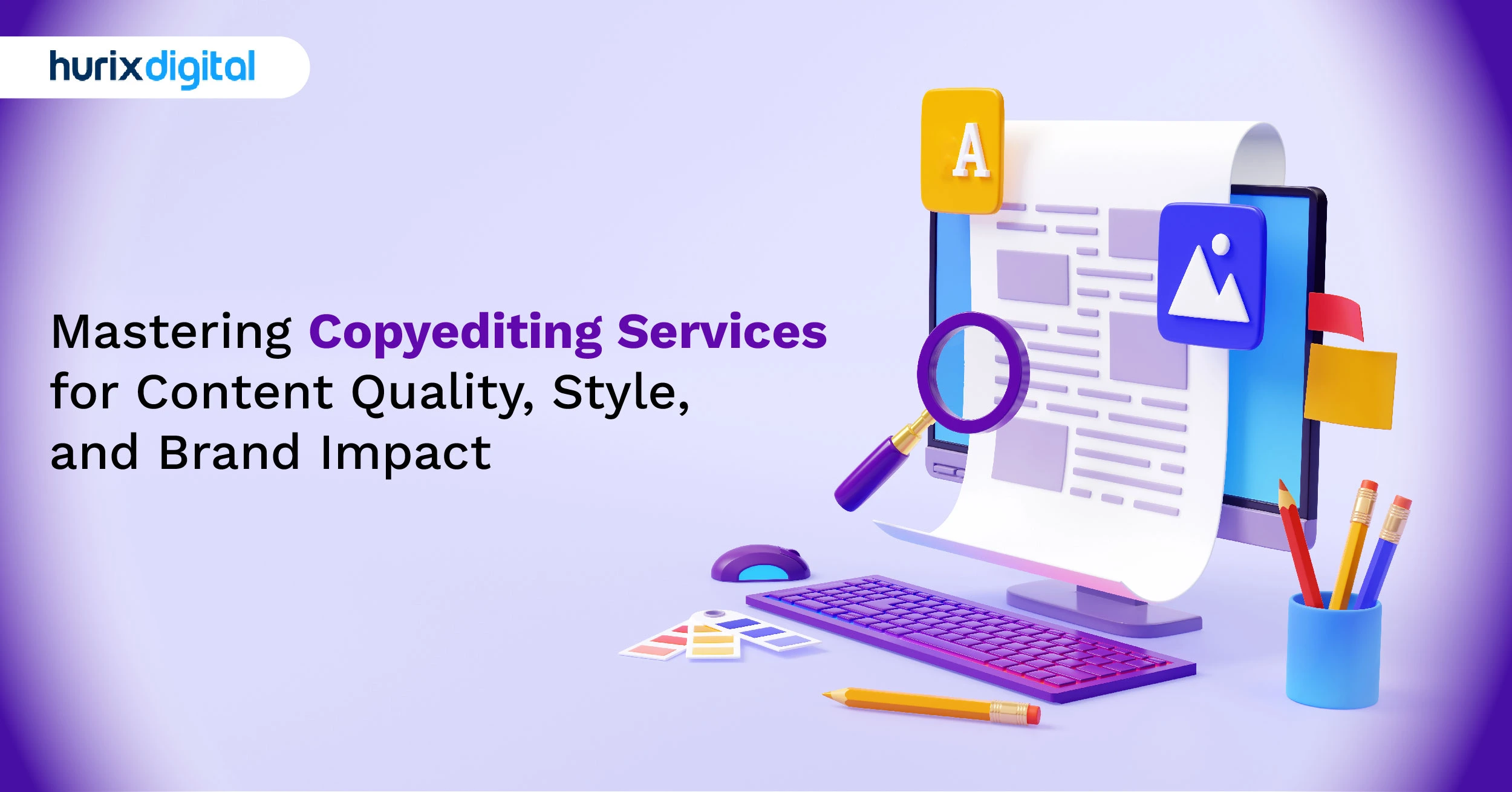
Why UX-Driven Innovation is the Key to IT Efficiency & Productivity?
Summarize with:
One of the most powerful strategies for long-term business involves customer loyalty and retention. Strong User Experience (UX) and User Interface (UI) are crucial to achieving a sustainable business. Investing in better UX for your brand and customers directly influences your brand’s reputation, identity, and reliability.
Ever hear a CEO lament, “We’ve poured millions into this platform, and the numbers just aren’t moving. Where did we go wrong?” It’s a frustratingly common refrain. Organizations struggle to figure out why users are not converting or returning, even when significant time, talent, and money have been allocated to their digital products. Hidden inside the interface, tiny obstacles can frustrate users and quietly push them away.
A well-designed UI increases the conversion rate by 200%. This shows how important it is today to create an interface that focuses on usability and accessibility for your users. But what happens when your existing interface isn’t performing? This is where UX audit services make a real difference.
This article explores how a strategic UX audit can uncover hidden issues, drive efficiency, and why it is a critical tool for any business looking to thrive. We will also touch upon UX-driven innovation, its link to business growth, and how to choose the right partner for success.
Table of Contents:
- Why are UX Audit Services Important for Your Business Growth Now?
- What Visible ROI Can UX Audit Services Deliver for Your Organization?
- Understanding UX as a Service
- The Core of UX as a Service: How User-Centered Design Shapes IT Efficiency
- Key Components of UX-Driven Innovation in IT Operations
- How UX-Driven Innovation Drives Productivity?
- How Do UX Audits Pinpoint Unseen Conversion Bottlenecks?
- How Intuitive Interfaces Influence Customer Retention and Loyalty?
- The Link Between Strategic UX Design and Business Growth
- Data-Driven UX Decisions and Their Impact on Revenue
- How UX-Driven IT Supports Digital Transformation?
- Crafting Winning UX Strategies for Digital Transformation
- How to Choose the Best UX Audit Partner for Long-Term Success?
- Wrapping Up
Why are UX Audit Services Important for Your Business Growth Now?
There has been a dramatic change in the digital world, and user impatience is the key takeaway. Just imagine what you do when a website slows down or an app is not working properly. How fast do you leave it? Within a few seconds, probably. This is how everyone else behaves, too. Nowadays, this is not about good-looking interfaces; it is strongly related to how a company keeps alive and gets bigger.
This is the main reason why UX audit services are never an option on a list; they are rather a crucial diagnostic tool. Businesses might feel that their digital product is working great. Analytics may prove that there is traffic to the website, even sales. But an audit goes beyond that. It goes deeper and asks, “Where exactly are people getting stuck? What is the low-level friction that we are not noticing?” It is a methodical, expert-led walkthrough of the user experience where the problems that users have, which cause them to drop out or get riled up, are discovered.
Let us refer to a very common situation: an e-commerce website. A person puts the goods they want to buy into the shopping cart and then leaves without making the purchase. Looking at the numbers, one can tell that “cart abandonment” has happened. The audit can find an obscure reason. The shipping estimator may be hidden, or the guest checkout may be complicated, thus creating a short scramble to decide the next step. Maybe the product photos are slow in loading, so the user doubts the purchase. These are not always obvious errors; these are design flaws that incrementally reduce revenue and customer loyalty without much noise. It’s somewhat like a mechanic trying to identify the source of a strange and faint noise in a car before it turns into a disaster.
Identifying and fixing these issues leads to immediate benefits such as decreasing user churn, increasing conversions, and reducing customer support volumes.
What Visible ROI Can UX Audit Services Deliver for Your Organization?
When a business thinks about a UX audit, the first notion is often “user experience enhancement.” That term may appear difficult to grasp. How does “better” actually affect the bottom line? The real benefit is not something soft you can feel; instead, it is demonstrated with the help of hard, cold numbers by a veteran professional.
A product team can spend months, or even years, creating a product. They launch it, feeling great, but find that users are leaving at a certain point. It might be the signup flow, the checkout, or they are simply unable to find one important feature. Without an audit, you are operating on guesswork. You are spending money on remodels or new features without getting to the cause of the problem.
From a revenue point of view, an audit can reveal factors like an overly long checkout or a confusing pricing page, which lead to abandoned shopping carts. After experts and data have identified these issues, fixing them will lead to better conversion rates. For example, a missing form label was the reason for an 8% increase in completions after it was fixed. This, in turn, leads to direct revenue growth.
Understanding UX as a Service
UX as a Service (UXaaS) transforms the way companies handle user experience by integrating it into continual operations instead of viewing it as a singular project improvement. This service model guarantees that UX design remains dynamic, constantly improving with real-time user data and feedback. This is less of a project-based relationship and much more in the category of an action-driven collaboration.
Incorporating UXaaS into business practices involves methodically improving the user interface and interaction on all digital platforms. Such integration allows companies to adapt swiftly to user needs, optimize user paths for better engagement, and drive business growth. By employing UX as a Service, organizations can consistently apply strategic UX principles to every facet of the user journey.
The Core of UX as a Service: How User-Centered Design Shapes IT Efficiency
A user-centric IT solution centers on creating functional and intuitive IT systems. Traditionally, IT systems have focused on backend functionality, often sidelining the user’s experience. Today, however, UX as a Service prioritizes user experience and reshapes IT landscapes to provide ease of use and adaptability.
Key Benefits of UX as a Service in IT
- Increased Usability: IT systems are progressively complicated, with interconnected tools and data-intensive workflows. Thoughtful UX allows employees to work more efficiently by simplifying workflows and reducing unnecessary steps.
- Minimized Downtime: Better user interfaces mean fewer errors and a reduced need for constant IT support, leading to smoother operations.
- Enhanced Agility: Systems designed with users in mind can quickly adapt to new demands, making your IT infrastructure more agile.
Key Components of UX-Driven Innovation in IT Operations
To implement effective UX as a Service, it’s important to integrate the following components into IT systems:
1. Human-Centered Design
A human-centered design approach prioritizes the end user’s experience, ensuring systems support natural workflows. When users are involved in the design process, the result is IT tools that align seamlessly with daily routines. When IT systems are user-friendly, employees adapt faster and can start contributing immediately.
2. User-Centric IT Solutions
User-centric IT Solutions offer personalized experiences, helping employees engage more efficiently with technology. For example, personalized dashboards for IT admins that highlight critical alerts make system monitoring more efficient and reduce response times. When interfaces are easy to navigate, IT teams can detect and resolve problems quickly.
3. Data-Driven UX for Predictive Maintenance
Data-driven UX enables IT teams to leverage predictive analytics. They can anticipate and fix issues before they disrupt workflows. Predictive tools with intuitive interfaces enable faster issue detection, which enhances overall IT operations efficiency. When data dashboards are well-designed, decision-makers can quickly access and interpret critical metrics.
4. Scalable UX Design for Future-Ready IT Systems
Scalable UX allows companies to grow without overhauling entire systems. This guarantees consistent workflows as demands increase. Scalable design can adapt to increased data loads or additional functionality, helping IT departments innovate without disruptions. A UX-focused approach ensures system architecture supports future upgrades.
How UX-Driven Innovation Drives Productivity?
UX-driven innovation is more than a trend; it’s a fundamental shift toward designing IT solutions that align with human behavior. UX for IT Systems is a strategic investment in speed and accuracy.
Here’s how it contributes directly to productivity:
- Reduces User Friction: Well-designed systems reduce friction points, allowing users to work with fewer disruptions. By minimizing unnecessary steps, UX-driven IT systems enable faster task completion.
- Improves Workflow Clarity: Clutter-free and logically organized UX designs offer employees a clear path to accomplish tasks. They reduce the time spent searching for information or figuring out the next steps.
- Enhances Collaboration and Communication: UX-designed communication tools simplify collaboration, helping teams stay on the same page. They improve information flow and support better cross-departmental communication.
How Do UX Audits Pinpoint Unseen Conversion Bottlenecks?
The biggest conversion blockers are not the obvious, glaring errors like a broken button. The really insidious bottlenecks are often invisible to the casual observer, including the very teams that built the product. This is where a deep UX audit is truly useful.
Take a sign-up flow, which may appear okay on the surface. An audit may point out problems, such as overly technical error messages causing confusion or a slightly off-sync progress indicator, which makes users doubt their input. These little frictions eat away at patience and trust, and users walk away.
One might also discover cognitive overload. A page that appears visually clean may, in reality, have too many choices, overwhelming the user without them even consciously knowing it. It’s the paradox of choice played out on a screen. A user won’t say, “I’m overwhelmed by options.” They’ll just close the tab. The audit, however, looking systematically at cognitive load and information hierarchy, can isolate these points of silent frustration.
Sometimes, it’s not about a particular UI element but a lack of clear communication that an action succeeded. For example, a user clicks ‘submit,’ and then there is no immediate feedback. A good audit reveals these murky moments and makes a connection between user behavior and outcomes.
How Intuitive Interfaces Influence Customer Retention and Loyalty?
When looking at an intuitive UX as a service, there are several ways in which it can affect customer retention. Let’s look at some interface design best practices for a better understanding of how you can create a better interface:
1. Seamless User Experience
A seamless user interface lets your customer easily navigate through a product list or services section without getting lost. When your customers cannot locate information, they will abandon your product in search of a better service. Therefore, usability and accessibility for interactive interfaces are critical to a user’s journey.
2. Enhanced Usability
When you provide UX as a service, it needs to be cleverly designed for high usability. This improves customer satisfaction and increases users’ chances of returning to your product. For example, providing features such as mobile-responsive interfaces and clear call-to-action buttons impacts the overall customer experience.
3. Building Brand Trust
When your brand maintains a consistent interface design throughout all platforms, you help them build familiarity and brand trust. Building trust through a consistent digital customer journey and ease of interaction earns you customer loyalty and more conversions.
4. Personalization
According to McKinsey’s study, more than 70% of companies are aiming for personalized experiences. Personalization makes customers feel more valued as the interactions are tailored to the user’s needs and preferences. Personalized user experience also leads to more interactions as customers are offered relevant and customized content.
5. Eliminating the Cognitive Load
Cognitive load refers to the amount of mental effort required to understand your service or product. When designing UI/UX interfaces thoughtfully, you simplify complex processes and minimize distractions. When your customers can easily navigate and interact with the product, it raises brand experience.
6. A Positive Emotional Experience for Customers
Designing your interface to cater to customers’ moods, such as incorporating familiar symbols or friendly language, builds positive interactions. It results in strong customer loyalty by creating a sense of trust and personal connection with your brand.
7. Onboarding and Initial Impressions are Crucial
Simplifying the onboarding process helps retain users from the start. Your brand’s digital interfaces can use guided walkthroughs to introduce essential features systematically. Easy-to-use signing-up processes and an intuitive registration process reduce the user’s frustration.
8. Building Brand Identity Through Consistency
Ensuring a consistent, personalized user experience across the web, mobile apps, and various digital platforms provides higher lifetime customer value. Consistent visual design, navigation patterns, and icons strengthen brand identity and help build user trust.
The Link Between Strategic UX Design and Business Growth
Strategic UX design is intricately connected to business expansion by having a direct impact on user engagement and conversion rates. An effectively designed user interface can potentially increase conversion rates. Strategic UX also improves digital interface usability by understanding user needs and behaviors, increasing user satisfaction.
Additionally, strategic UX design improves the user experience by streamlining the user journey to eliminate obstacles that could prevent potential conversions. By simplifying processes like checkouts, registrations, and data entry, businesses can greatly decrease user frustration and abandonment rates. Such improvement directly impacts profits by converting more users into paying customers.
Offering UX as a service enables companies to constantly gather data on user interactions, which can then be analyzed to inform decisions and enhance the UX. This ensures that UX changes are implemented instantly, keeping up with changing user demands and market trends.
Data-Driven UX Decisions and Their Impact on Revenue
Data-driven UX decisions are crucial for refining user experience and directly driving revenue growth. For every second delay in mobile page load, conversions can fall by up to 20%. This statistic highlights the importance of performance optimizations within UX design.
Here’s how the strategic use of data improves UX and impacts financial outcomes:
1. Personalization
Data insights allow for tailored user experiences, which increase engagement by presenting users with options that align with their preferences and past behaviors.
2. Optimization of User Journeys
Companies can identify bottlenecks or drop-off points in the user journey by analyzing user behavior data. Streamlining these paths boosts conversion rates by reducing user frustration and abandonment.
3. A/B Testing
Implementing A/B testing based on user data helps determine which UX elements work best. This method allows businesses to adopt the most effective changes, maximizing revenue generation potential.
4. Predictive Analytics
Predictive analytics in UX design anticipates user needs and proactively addresses them. As a result, customer satisfaction increases, leading to more repeat business.
5. ROI Measurement
Data-driven UX enables precise measurement of return on investment from specific UX initiatives, providing clear links between user experience enhancements and revenue growth.
How UX-Driven IT Supports Digital Transformation?
A user-centric approach is vital for any organization undergoing digital transformation. Many transformation efforts fail due to low adoption, often because systems are complex or unintuitive. Over 80% of digital transformation projects fail due to poor collaboration.
When IT teams prioritize UX from the outset, they build systems that are more likely to be embraced by employees. This reduces resistance to change and supports long-term success. A siloed approach to digital transformation is costly, triggering a culture of low efficiency and fractured data management. This is because, even though businesses invest in multiple technology solutions, the solutions do not seamlessly speak to each other. Adopting best practices can lead to superior user experiences and better cross-departmental collaboration.
Crafting Winning UX Strategies for Digital Transformation
A winning UX strategy requires a user-centered approach, a deep understanding of users’ needs, and an effort to concentrate on areas like user research, information architecture, and usability testing.
Here’s a breakdown of essential components for creating an impactful UX strategy:
1. User-Centered Design Approach
Place the user at the core of your design process. This involves conducting user research, understanding their needs and pain points, and iterating on designs based on user feedback. Create detailed profiles of your target users to guide design decisions.
2. Prioritizing User Needs and Pain Points
Focus on solving user problems and addressing their specific needs. Make sure your digital solutions are easy to use, navigate, and understand. Experiment with different design variations to optimize user experience.
3. Design for Accessibility and Inclusion
Ensure digital experiences are accessible and inclusive for users of diverse abilities. Adhere to Web Content Accessibility Guidelines (WCAG) so that digital experiences remain accessible to all.
4. Collaboration Between Design and Development Teams
Promote closer collaboration between design and development teams so that the user experience and digital transformation integrate seamlessly with the technical implementation. Develop flexible, agile capabilities and facilitate iterative design and feedback cycles.
5. Continuous Improvement
Design should be refined through iterative processes informed by user feedback and data insights. Analytics tools provide valuable data to track how users interact with a platform, highlighting areas of friction and opportunities for optimization.
How to Choose the Best UX Audit Partner for Long-Term Success?
Choosing the right partner for a UX audit, especially for long-term impact, is not a procurement exercise. It’s about finding a kindred spirit for your product’s journey. The true differentiator is how they view your world.
A really wise partner doesn’t identify problems; they put them in the context of your operational reality. They know you don’t have an army of developers waiting to fix everything tomorrow. They’ll ask: What are your team’s biggest bottlenecks? What can be done in the next quarter? It’s not an exhaustive list, but actionable, prioritized information.
Look for a partner who is genuinely interested in your business objectives. They’ll get under the surface, asking about legacy systems or friction between marketing and engineering. They put UX principles into real, context-aware advice. Rather than “I can’t find this button,” they’ll say, “It’s difficult, which affects conversions and the revenue of Q3 because users don’t know what to do during this critical stage in the funnel.”
The best relationships are based on communication and understanding that perfection doesn’t happen right away. This commitment ensures continual improvement with long-term investment over quick fixes.
Wrapping Up
UX as a service transcends traditional design to become a strategic asset that drives business growth. By implementing strategic UX design and conducting thorough audits, businesses can optimize user interactions to improve engagement, promote customer retention, and increase revenue.
The key to organizational success is focusing on where users are struggling and having the insight to solve those problems creatively. UX audit services offer the diagnostic precision for making informed decisions and aligning user experience initiatives with broader business objectives.
As organizations strive to stay competitive, investing in UX is not just beneficial; it’s essential. Don’t let invisible barriers hold you back. Connect with Hurix Digital to run a strategic UX audit aimed at pinpointing bottlenecks, improving compliance, and building a roadmap for continued digital growth.
Summarize with:

Vice President & SBU Head –
Delivery at Hurix Technology, based in Mumbai. With extensive experience leading delivery and technology teams, he excels at scaling operations, optimizing workflows, and ensuring top-tier service quality. Ravi drives cross-functional collaboration to deliver robust digital learning solutions and client satisfaction
 A Space for Thoughtful
A Space for Thoughtful 




